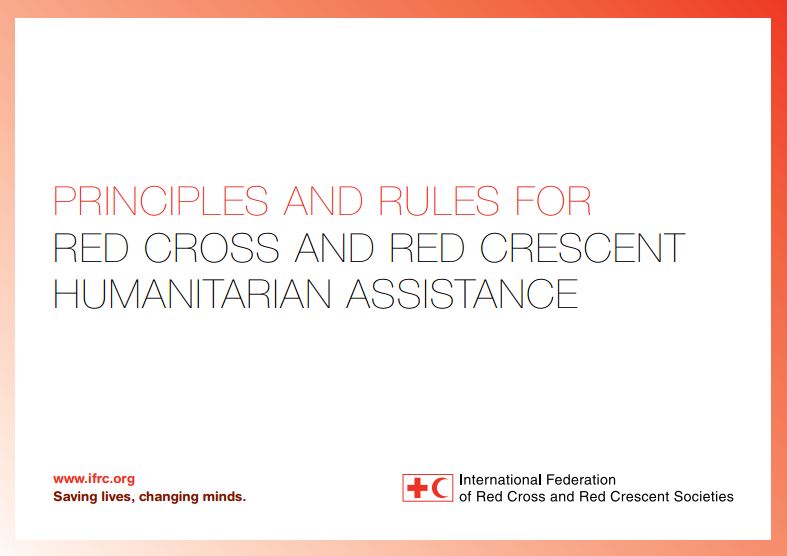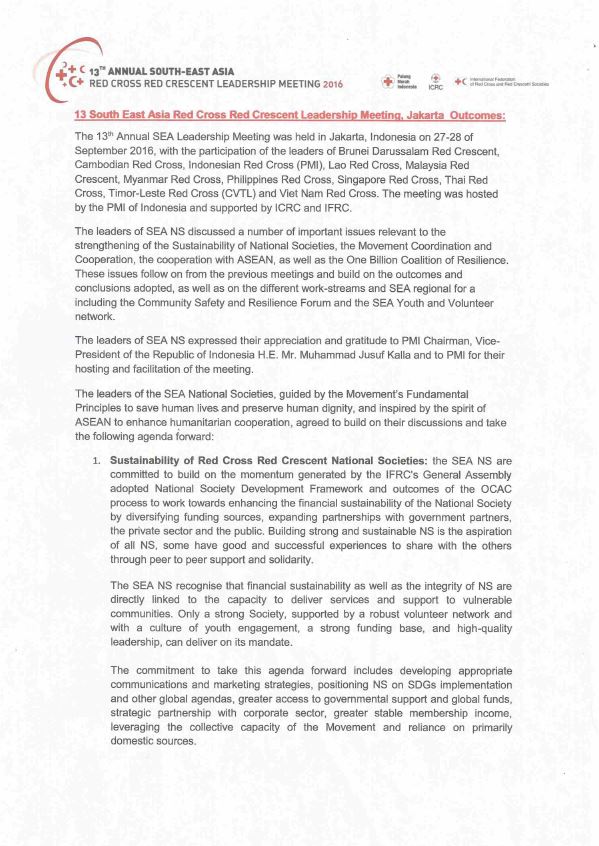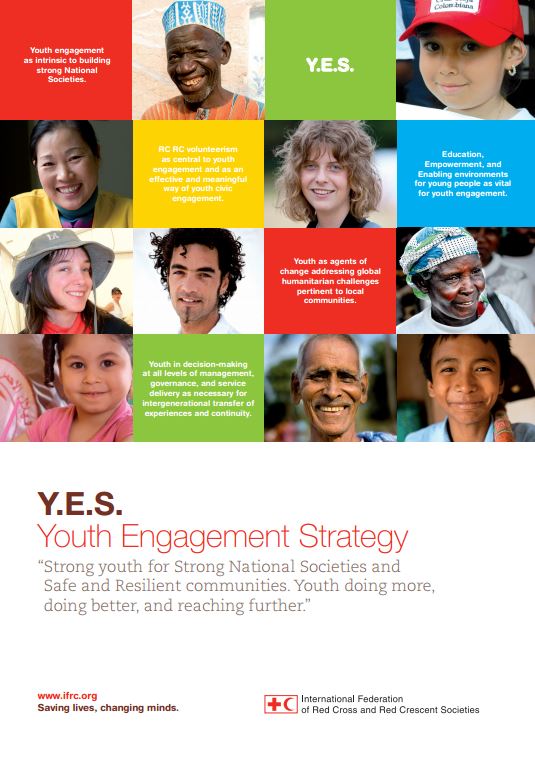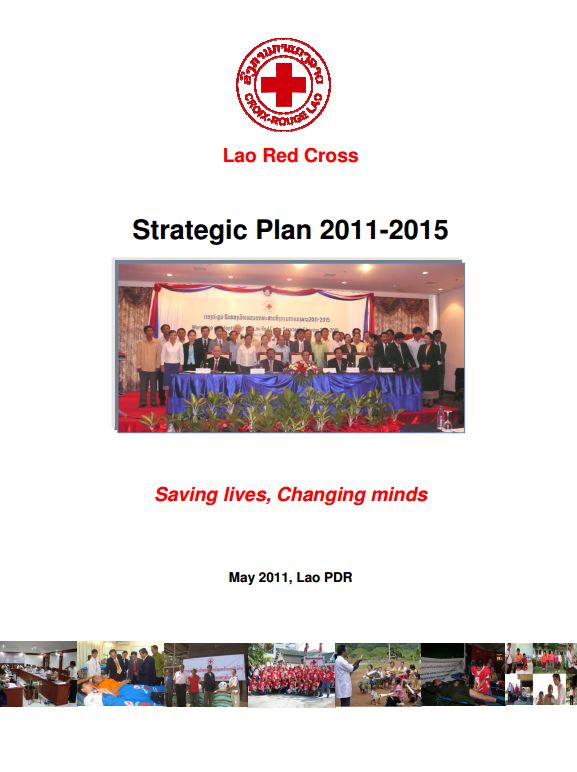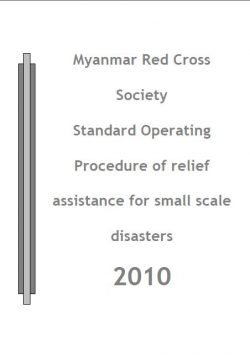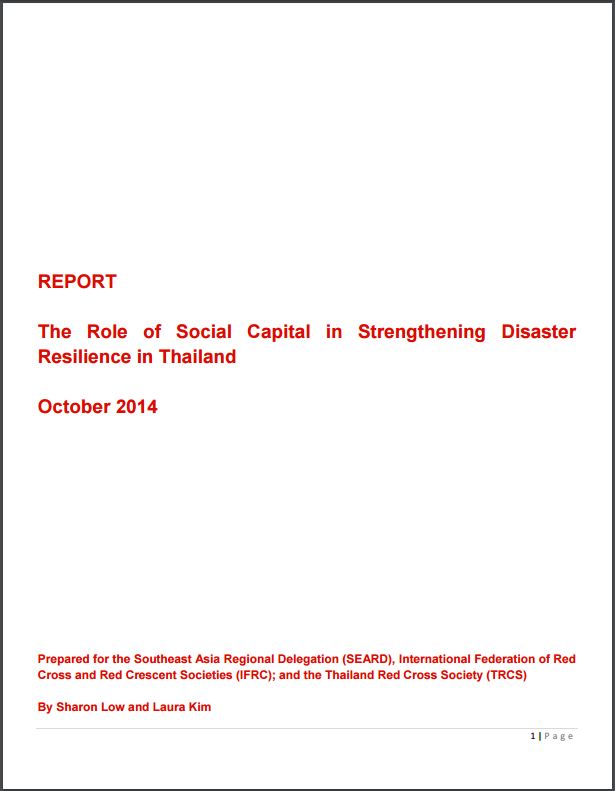PMI key policies, strategic plan and operational plan 2014-2019
- Strategy Plan Framework
- Strategic Environmental Analysis
- PMI Strategic Plan year 2014-2019
- PMI Operational Plan year 2015-2019 (with respect to its strategic objectives)
- Monitoring and Evaluation Framework
- Annex that includes: Key Performance Indicators for PMI Strategic Plan 2014-2019, Achievement Indicators for PMI Operational Plan 2015-2019, and Indicator Registry
![]()
Principles and Rules for Red Cross and Red Crescent Humanitarian Assistance
Purpose:
These Principles and Rules for Red Cross and Red Crescent Humanitarian Assistance govern National Societies and their International Federation in international humanitarian assistance (excluding armed conflict, internal strife and their direct results).
These Principles and Rules recognize the importance of strengthening organizational, coordination and delivery capacities of National Societies, to respond to the increasing number and complexity of disasters and the growing number of vulnerable people. They call for greater collective learning, adaptation, innovation and leadership to ensure that the Movement achieves greater humanitarian impact. These Principles and Rules encompass preparedness for response, disaster relief and early recovery activities. They complement commitments to disaster risk reduction and seek to encourage National Societies to link relief, recovery and development. They establish a coordinated and agreed approach to quality and accountability, and recognize partnerships with public authorities, humanitarian actors and other organizations external to the Movement. These Principles and Rules are adopted within the statutory framework of the Movement.
Overview:
Rules between and among National Societies and the International Federation involve:
- National Societies receiving international humanitarian assistance: on preparedness, requests for assistance, coordinated and principled response
- National Societies providing international assistance: on preparedness, requests for assistance, coordinated and principled response
- The International Federation: on preparedness, requests for assistance, coordinated and principled response
- Relief to recovery
- Quality and accountability: on standards; beneficiary engagement; planning, monitoring, evaluation, and reporting; staff and volunteer management; resource management; risk management and audit
- Relations with public authorities: on public authorities and civil protection; and civil military coordination
- Relations with external actors: on humanitarian agencies and other organisations; private sector; and media and communications
Usage: Policy reference and guidelines for implementation
Audience: National Society
![]()
13th Southeast Asia Red Cross Red Crescent Leadership Meeting Jakarta Outcomes
Purpose and overview:
The outcome document resulted from the 13th Southeast Asia Red Cross Red Crescent Leadership meeting that was held in Jakarta, Indonesia, on 27-28 September 2016, with the participation of the leaders of the National Societies of Brunei Darussalam, Cambodia, Indonesia, Lao, Malaysia, Myanmar, Philippines, Singapore, Thailand, Timor-Leste and Viet Nam. The meeting was hosted by PMI of Indonesia ans supported by ICRC and IFRC.
The meeting saw the discussions of issues relevant to strengthening of the sustainability of National Societies, the Movement coordination and cooperation, the cooperation with ASEAN, as well as the One Billion Coalition for Resilience.
Usage: Policy reference
Audience: National Society leaders and staff
![]()
Federation HIV/AIDS Policy (2002) – HIV
Purpose:
The International Federation HIV/AIDS Policy, 2002, approved by the Governing Board, provides a framework to support National Societies in the implementation of HIV/AIDS related activities. It states, “Guided by sound public health and humanitarian principles, promote and where appropriate facilitate harm reduction strategies for high risk behaviours and traditional practices, including advocacy for law reform as necessary”.
Overview:
The policy includes: the scope of the policy, statement, responsibilities, and references.
Usage: Policy reference
Audience: National Society leadership and staff
![]()
IFRC Youth Engagement Strategy
Purpose:
The IFRC Youth Engagement Strategy (Y.E.S.) is a global, unifying strategic framework for youth engagement in Red Cross Red Crescent National Societies and is specifically linked to expected impacts of the Enabling Action # 1 ‘Building stronger Red Cross Red Crescent National Societies National Societies’ from the IFRC Strategy 2020.
While the IFRC Youth Policy (2011) informs National Societies on the value of children, adolescents, and young adults as key drivers of action and development, the Y.E.S. represents a specific strategic framework for facilitating meaningful engagement of young people as today’s and tomorrow’s leaders, as Red Cross Red Crescent National Societies volunteers, and as young beneficiaries of Red Cross Red Crescent National Societies programmes and services.
The Y.E.S. is not a strategy only for youth. It needs to be owned and implemented by and throughout the National Society. Senior leadership of National Societies, as key stakeholders, are encouraged to actively engage in dialogue and equal partnership with young people to bring the Y.E.S. to life.
Overview:
Y.E.S. brings together 3 perspectives of meaningful youth engagement within RCRC – youth as leaders, youth as volunteers, and youth as beneficiaries (IFRC Youth Policy, 2011) with components of the IFRC 3Es framework – RCRC Youth Education, Youth Empowerment, and Creating Enabling environments for Youth.
Target Audience: National Society Leadership and Staff
![]()
Lao Red Cross Strategic Plan 2011 -2015
Purpose:
This five year strategic plan of Lao Red Cross 2011-2015 is the third strategic plan. The plan was developed out of lessons following the second strategic plan (2006-2010) and the most recent extensive planning and consultation process. It provides a framework for the Lao Red Cross as it continues to strengthen its work on four core areas: disaster management, health and care in the community, promotion of fundamental principles and humanitarian values, and organizational development.
Overview:
The strategic plan includes challenges, vision and mission, strategic directions with each corresponding core areas and enabling actions.
Usage: Policy development.
Audience: National Society leadership.
See also: the Lao version of the strategic plan.
![]()
Myanmar Red Cross Society Disaster Management Policy 2010
Purpose: MRCS sets the process to revise its first Disaster Management (DM) Policy-2003 in order to
be more compatible with the recent country level initiatives as well as regional and global
trends on disaster management.
Overview: Disaster Management Policy 2010.
Usage: Policy development.
Audience: Technical staff, Volunteers.
![]()
Myanmar Red Cross Society Standard Operating Procedure of relief assistance for small scale disasters
Purpose: Rapid assessment, coordination, relief assistance, and reporting.
Overview: Standard Operating Procedure of relief assistance for small scale disasters.
Usage: Guidance for project implementation.
Audience: Technical staff.
![]()
The Role of Social Capital in Strengthening Disaster Resilience in Thailand
Purpose
This study aims contribute to the existing evidence base on how social capital can be harnessed to strengthen disaster risk reduction (DRR) in Thailand. While social capital is generally recognised as an important means to building community resilience, there is still little knowledge about how it can be best utilised towards DRR efforts. The study is based on a literature review and field work carried out in three communities in Thailand.
Overview
- The study finds that, despite the attachment and harmony that people feel towards their community, levels of social trust are low. This has implications not only for Thai communities’ abilities to respond to, and cope with, disasters, but also in their abilities to prosper and thrive as a nation.
- Thai communities are built on strong family ties and on strong bonds with friends and neighbours. It is a society of very strong immediate networks, in that very few people lack a support network. However, this means that, for the minority that do lack social capital, life can be extremely difficult. As such, investments in social capital must ensure that they are broad-based and inclusive, with a focus on integrating marginalised populations, such as undocumented migrant communities or political and religious minorities.
Usage: Learning from experience
Audiences: National Society leadership, Technical staff
![]()



